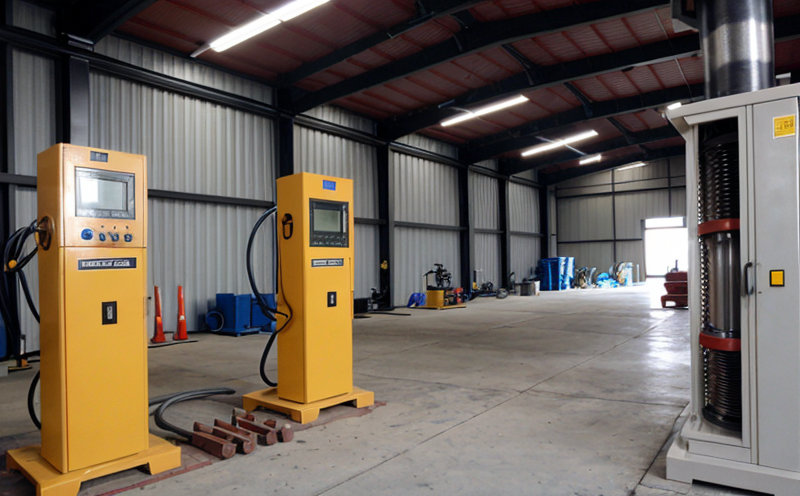ISO 3037-3 Edge Crush Test Verification
The ISO 3037-3 Edge Crush Test (ECT) is a critical tool used in the packaging industry for evaluating the mechanical strength of corrugated board. This test measures how well the board can resist lateral crushing forces, which is essential for ensuring that packages and containers meet structural integrity standards required by various industries.
Quality managers rely on accurate ECT testing to verify that their products comply with international standards such as ISO 3037-3. By using this test, companies can ensure product safety during transportation and storage while also enhancing brand reputation through consistent quality assurance. The edge crush strength is a key factor in determining the performance of corrugated materials under compression forces.
In addition to its role in safeguarding products during transit, the ECT helps manufacturers optimize their production processes by identifying weaknesses within their designs early on. This allows for timely adjustments before large-scale issues arise, ultimately saving time and resources.
The edge crush test involves compressing a sample cut from corrugated board along an edge until it fails. The maximum load applied to the specimen is recorded as its ECT value. Factors like the type of linerboard used in construction, the flute size, and the overall design all affect this measurement.
Accurate testing ensures compliance with industry best practices and allows for precise adjustments during the manufacturing process if necessary. It also plays an important role in preventing damage to products during shipment or storage by ensuring adequate protection against external forces.
Incorporating reliable edge crush testing into your quality assurance program can help reduce waste, improve efficiency, and enhance customer satisfaction. By leveraging this information effectively, organizations can maintain high standards of product integrity while promoting sustainable practices throughout their supply chain operations.
Scope and Methodology
| Aspect | Description |
|---|---|
| Test Specimen Preparation | The test specimen must be cut from corrugated board according to specified dimensions. The edges of the sample should remain parallel and free from defects. |
| Testing Instrumentation | An appropriate hydraulic press or compression testing machine is used for performing the edge crush test. This instrument should have a capacity greater than the expected maximum load required during the test. |
| Test Procedure | The prepared sample is placed between two platens on the testing machine, with one end supported and the other free to move under compression. The platen moves down at a controlled rate until the specimen fails or reaches its specified limit. |
| Data Collection | Load cells attached to the testing machine record the applied force during each test run. These readings are used to calculate the edge crush strength (ECS). |
The results of an ISO 3037-3 Edge Crush Test provide valuable insights into the structural integrity of corrugated materials, enabling informed decisions about design modifications and quality control measures. Regular verification using this standard ensures consistency across batches and minimizes risks associated with substandard products.
Quality and Reliability Assurance
Performing regular ISO 3037-3 Edge Crush Tests helps maintain consistent product quality throughout manufacturing processes. By adhering to established protocols, companies can identify any deviations from expected performance early on, allowing for corrective actions before they become significant problems.
Implementing a robust testing regimen supports continuous improvement efforts aimed at enhancing overall efficiency and reducing waste. For instance, if the test reveals that certain materials do not meet required standards, manufacturers may need to reevaluate their sourcing decisions or explore alternative suppliers capable of providing suitable raw materials.
Moreover, reliable edge crush testing contributes positively towards environmental sustainability goals by ensuring that packaging solutions are optimized for both performance and resource usage. Through careful selection and evaluation of corrugated board components, organizations can contribute meaningfully to circular economy initiatives without compromising on functionality or safety.
Competitive Advantage and Market Impact
- Enhanced customer confidence through proven compliance with international standards.
- Prompt identification of potential issues allowing for timely corrective action.
- Achievement of regulatory requirements essential for market entry in specific jurisdictions.
- Improved supply chain reliability by ensuring all parties involved adhere to agreed-upon specifications.
- Demonstration of commitment to sustainability through optimized packaging designs that balance performance with resource efficiency.
By incorporating ISO 3037-3 Edge Crush Test verification into their operations, businesses can establish themselves as leaders in the field. This not only differentiates them from competitors but also fosters long-term relationships based on mutual trust and shared values around quality and sustainability.





